#learn data science smartly
Explore tagged Tumblr posts
Text
Five Best Science Podcasts Of 2024
Science podcasts are a bright spot within the podcast industry, counteracting the growing number of conspiracy, extremist, and fact-free podcasts.

As I’ve mentioned before, Ear Worthy uses a panel of people from around the U.S., from Texas to California, New Jersey to Oregon, and Alabama to New Hampshire. Also, we do not choose the low-hanging fruit of podcasts with high visibility because of marketing by their podcast network. Just because a podcast has thousands of downloads does not make it a quality, ear-worthy show.
In no particular order, here are Ear Worthy’s Five Science Podcasts of 2024.
***********************************************
Science Vs
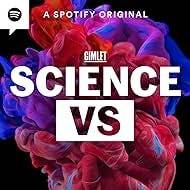
And they do so tongue-in-cheek, but also with no fear of proclaiming “the data isn’t clear” or “we need more data for greater certainty.” Behind the wily wisecracks of Zukerman and the show’s refusal to take itself too seriously, Science Vs is deadly serious about facts, research, facts, and conclusions. But it never seems to get too far ahead of its skis, making claims it cannot substantiate.
The show’s success is evident from its consistent ranking as one of the most downloaded podcasts. This year’s episodes of note include microplastics, ask Wendy anything, and what’s at the edge of space.
*************************************************
Scientists don’t really know what 95 percent of the universe is made up of. That fact is particularly shocking, considering we live in an age where humans seem to know it all.
That’s why Vox’s science podcast — Unexplainable — is especially timely because it takes listeners on a journey into the unknown and then explores that feeling when “you think you understand something and there’s just so much more.”
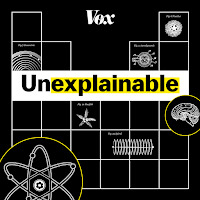
Produced by Vox — known for quality, thoughtful podcasts — Unexplainable host Hassenfeld explains that the podcast isn’t about the answers. “It’s about the questions,” he says. Alex Trebek would be proud of him.
Unexplainable launched its first episode in March 2021. Dutifully, that initial episode focused on the mystery of dark matter, which is composed of particles that do not absorb, reflect, or emit light. Therefore, dark matter can not be detected by electromagnetic radiation and can’t be seen directly.
The format of Unexplainable is straightforward and is smartly designed to enhance understanding rather than grovel for listeners. In the show, host Noam Hassenfeld is joined by an array of experts and Vox reporters each week to look at fascinating unanswered questions in science and the mind-bending ways scientists are trying to answer them.
Episodes that are ear-worthy this year includes does your gut have feelings, how did Earth get its water, and what do dinosaurs sound like.
****************************************************
Big Picture Science
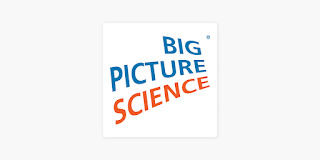
The show’s co-hosts are Seth Shostak and Molly Bentley. Shostak and Bentley have been doing for years, so they are comfortable as hosts, interviewers, and with each other. The co-hosts can geek out on hard science and still laugh at science nerdiness, and they can get tough with junk science theories and claims. In essence, they make an enjoyable combo,
On the April 15, 2024, episode, “For The Birds” we hear about migratory birds that travel thousands of miles in a display of endurance that would make an Olympic athlete gasp. More importantly, we discover what can we do to save disappearing species?
Plus, we learn how 19th century bird-lovers, appalled by feathered hats, started the modern conservation movement.
On the recent July 11, 2024, show — “Aliens Now” — the co-hosts talk to astrophysicist Adam Frank about the possibility of intelligent life on other planets.
**************************************************
Taboo Science
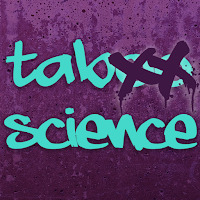
Ashley Hamer is a writer, podcaster, and science communicator in Chicago. She is the creator of Taboo Science and the former host and content lead of the science podcast Curiosity Daily.
The podcast began in September 2020, and it didn’t pull any punches in its first several episodes. Topics included pornography, profanity, cannibalism, penises, and vaginas. I can just sense the uptight people who are organizing bans.
If you, as a listener, are into your science being serious stuff with people with PhDs speaking in solemn tones, Taboo Science is not for you.
But if enjoy a beaker full of fun with your science lesson, and don’t mind your poop being referred to you as “butt nuggets,” then Taboo Science is for you.
The most taboo episodes this year include its miniseries about the weird and colorful world of kinks and fetishes. Be prepared to be shocked. Or not.
*****************************************
Short Wave
Short Wave is a National Public Radio (NPR) podcast that gives us a sneak peek behind the science headlines — all in about 10 minutes, every weekday. It’s science for everyone, using a lot of creativity and a little humor.
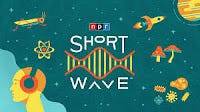
Emily Kwong is perfectly capable of presenting science from a different wavelength.
Short Wave can do a sub -10-minute deep dive because Sofia is so fluent in science and communicating key concepts. Recent episodes include a tale of swarming locusts in Africa and how scientists in Tempe, AZ are using a low-carb diet to minimize crop damage.
Or a truly troubling episode about a condition called silicosis, and it’s been known about for decades. So why is it now emerging in new numbers among workers who cut kitchen counter tops? NPR science correspondent Nell Greenfieldboyce explains in such a way you’ll say a prayer that you kept your old Formica counter tops.
New discoveries, everyday mysteries, and the science behind the headlines — all in about 10 minutes, every weekday. It’s science for everyone, using a lot of creativity and a little humor.
**************************************************
Honorable Mention Why This Universe — The biggest ideas in physics, broken down. Join University of Chicago theoretical physicist Dan Hooper and co-host Shalma Wegsman as they answer your questions about dark matter, black holes, quantum mechanics, and more.
19 notes
·
View notes
Text
Igniting Growth: Smart Moves for Startup Success in D.C.
The Washington Metro Area is buzzing with entrepreneurial energy. From tech startups in Northern Virginia to creative ventures in D.C., the region has become a powerful incubator for new businesses. Diverse communities, a highly educated population, and proximity to government agencies make it a unique launching pad for innovation.
However, with opportunity comes intense competition. For startups to gain visibility and attract customers, they need more than great ideas—they need smart, actionable strategies that cut through the noise and make an impact quickly.

Building Strong Local Foundations
No startup thrives without first connecting with its immediate community. For businesses in the D.C. area, that means engaging with both locals and regional influencers. Attending local events, networking with other small business owners, and participating in trade associations can help build strong relationships from day one.
Hyper-local digital campaigns also play a role. Geotargeted ads, neighborhood-specific promotions, and SEO tailored to D.C. neighborhoods help startups reach people who matter most. These foundational moves are essential building blocks in crafting the best marketing strategies for startups in the Washington Metro Area.
Crafting a Clear, Unique Message
In a region filled with government contractors, policy think tanks, and tech disruptors, standing out is essential. That starts with a clear brand message. Startups must answer: What problem are they solving? Why should anyone care?
This clarity fuels every marketing decision—from social media captions to investor pitches. Consistent storytelling builds brand identity, while authenticity attracts loyal followers. The goal isn’t to be louder than competitors—it’s to be more precise and memorable.
Leveraging Digital Tools and Analytics
Digital marketing is where strategy meets science. Websites, content, email, and social media aren’t just marketing tools—they’re data-rich platforms that reveal what’s working and what’s not.
Startups must take advantage of analytics to track customer behavior, monitor campaign success, and adjust their messaging in real-time. Pay-per-click ads, retargeting, and A/B testing can offer fast feedback loops for optimization.
Incorporating these tactics into the best marketing strategies for startups in the Washington Metro Area helps turn limited budgets into powerful results. Smart use of data ensures every dollar works harder.
Collaborating to Amplify Reach
Partnerships can be powerful in a region built on networks. Collaborating with local influencers, other startups, or even community organizations can introduce a brand to new audiences. Joint promotions, webinars, and co-hosted events are affordable and authentic ways to expand reach.
Startups should also explore local media opportunities—guest blogs, podcasts, or regional business features. A well-placed article or interview can dramatically boost credibility and visibility.
Long-Term Focus, Short-Term Action
Success doesn’t happen overnight. While instant wins are exciting, true growth comes from a balance of patience and agility. Startups must stay flexible, and ready to adjust campaigns as trends and feedback evolve. At the same time, keeping a long-term vision ensures that early moves support future goals.
In shaping the best marketing strategies for startups in the Washington Metro Area, consistency and adaptability are key. Founders must stay focused, measure results, and refine their approach with each new lesson learned.
Conclusion: Winning in a Competitive Landscape
The D.C. area offers incredible potential for startups willing to hustle smartly. By blending community engagement, digital innovation, authentic messaging, and agile planning, young businesses can rise above the competition.
The journey isn’t easy, but with the right strategy, the path to growth becomes clearer—one bold move at a time.
0 notes
Text
Budgeting for Education: Tips From Delhi’s Data Science Students
Discover how Delhi’s data science students smartly manage their finances for education—balancing course fees, learning resources, and daily expenses. Learn practical budgeting tips that help make the most of the best data science courses Delhi offers without overspending.
0 notes
Text
Predictive Analytics in Healthcare: Can Data Tell the Future?
Imagine a world where your doctor knows you’re likely to have a heart issue before you ever feel a symptom. Or where a hospital prepares for an increase in asthma cases next week, because the data said so. It might sound like science fiction, but it’s not. It’s happening right now.

Welcome to the era of predictive analytics in healthcare, where data is no longer just a record of the past — it's a glimpse into the future.
What Is Predictive Analytics?
Predictive analytics uses historical data, statistical models, and machine learning to forecast what might happen next. In healthcare, this means analyzing patient records, lab results, lifestyle data, and even environmental factors to predict disease risk, hospital readmissions, outbreaks, and more.
But can data really tell the future? Surprisingly, yes — and it’s getting better at it every day.
Saving Lives Before the Crisis Hits
One of the most exciting applications of predictive analytics is early intervention. For instance, if a patient has slightly elevated blood pressure, missed a few check-ups, and has a family history of heart disease, the system might flag them as high-risk. Doctors can then step in with advice, medication, or lifestyle changes before things escalate.
In intensive care units, predictive models are being used to monitor patients in real-time. A sudden combination of subtle changes in vital signs might suggest sepsis — long before the visible symptoms appear. In these scenarios, minutes matter, and prediction can mean survival.
Healthcare That Plans Ahead
Hospitals and healthcare systems are also using predictive tools to prepare better. Let’s say flu season is approaching. Instead of reacting to patient overflow, hospitals can analyze past data to forecast the peak, ensure enough beds and staff are available, and manage resources smartly.
This proactive approach doesn’t just improve care — it reduces costs and stress on healthcare workers. It’s a win-win.
Personalizing Patient Journeys
Not every treatment works the same for every patient. That’s where predictive analytics shines again. By understanding how similar patients responded to certain medications or therapies, doctors can tailor treatment plans more effectively.
It’s like having thousands of case studies behind every decision — all processed in seconds.
This level of personalization is only possible because of advancements in healthcare data analytics — the broader practice of collecting, organizing, and analyzing massive amounts of medical data to improve decisions at every level.
Data Isn’t Perfect — But It’s Powerful
Of course, predictive analytics isn’t magic. It depends on data quality, ethical use, and smart interpretation. False positives or over-reliance on algorithms can cause issues, so human oversight is still crucial. But when used responsibly, it adds an incredible layer of intelligence to healthcare.
And it’s not just about the numbers — it’s about using those numbers to treat people better, faster, and more effectively.
A Glimpse Into What’s Next
The future? It’s looking even more data-driven.
Imagine AI-powered assistants reminding you of check-ups, flagging unhealthy patterns, or even calling emergency services if your wearable device detects signs of a heart attack. We’re not far from that future — we’re building it now.
In fact, data analysis in healthcare is moving toward real-time prediction, where systems not only react to new information but adjust dynamically, much like how traffic apps reroute you in real time.
Final Thought
Can data tell the future? Not with 100% certainty — but close enough to save lives, cut costs, and deliver better care. Predictive analytics won’t replace doctors, but it will make them smarter, faster, and more effective.
And in a world where every second counts, that’s more than just a technical breakthrough — it’s a human one.
0 notes
Text
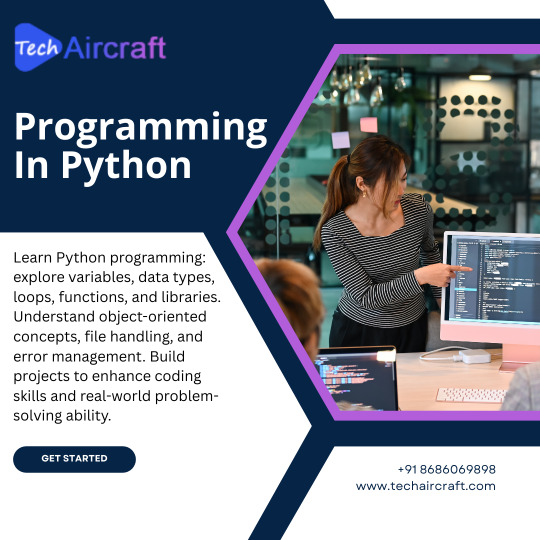
Start Your Coding Journey with Python – The Language of the Future! 🐍💻 Want to step into the world of programming? Python is the perfect place to begin! Known for its simplicity, readability, and versatility, Python is widely used in web development, data science, AI, machine learning, automation, and more. 🚀 Whether you're a complete beginner or looking to sharpen your skills, learning Python opens the door to endless opportunities. From building real-world projects to solving complex problems, Python helps you think logically and code smartly. 💡 Join the global community of Python developers and future-proof your career today. The best part? It’s fun, easy to learn, and in high demand!
🔥 Start learning now and turn your ideas into reality with Python!
#PythonProgramming #LearnToCode #CodingLife #PythonBeginners #ProgrammingInPython #TechSkills #CodeNewbie #DeveloperLife #AutomationWithPython #DataScience #MachineLearning #PythonProjects #CodingIsFun #FutureWithPython #TechJourney
0 notes
Text
IIT JAM Career Scope After M.Sc: Top Opportunities & How to Prepare for IIT JAM 2026
Are you planning to pursue M.Sc from a reputed institute like an IIT, NIT, or IISc? If yes, then clearing IIT JAM 2026 can be your ideal launchpad! This prestigious exam not only opens doors to top postgraduate programs but also leads to a wide range of high-paying and impactful career paths.
In this blog, we will explore the career scope after M.Sc through IIT JAM, and guide you on how to start your preparation for IIT JAM 2026 smartly.
🔍 What is IIT JAM?
IIT JAM (Joint Admission Test for M.Sc) is a national-level entrance test conducted by the Indian Institutes of Technology for admission to:
M.Sc (2 years)
Joint M.Sc.-Ph.D. programs
M.Sc.-Ph.D. dual degree programs
The exam is conducted for subjects including Physics, Chemistry, Mathematics, Biotechnology, Economics, and more.
🎓 Career Scope After M.Sc Through IIT JAM
Getting into an M.Sc program via IIT JAM is a significant academic milestone. But what comes after M.Sc? Let’s explore the major career options:
1️⃣ Ph.D. & Research Career
After M.Sc, many students opt for a Ph.D. in India or abroad. IITs, IISc, IISERs, and foreign universities offer excellent opportunities in advanced research. Fields include:
Quantum Physics, Organic Chemistry, Pure Mathematics
Life Sciences, Nanotechnology, Artificial Intelligence
Earth Sciences, Environmental Science
You can pursue a Ph.D. through fellowships like:
CSIR-UGC NET JRF
GATE Fellowship
INSPIRE Fellowship
PMRF (Prime Minister’s Research Fellowship)
2️⃣ Jobs in Government R&D Organizations
With an M.Sc from IITs or top institutes, you can apply to reputed government R&D centers such as:
ISRO (Indian Space Research Organization)
DRDO (Defence Research and Development Organisation)
BARC (Bhabha Atomic Research Centre)
CSIR Labs
IIT/NIT/IISc research labs
These jobs are not just well-paid but also provide high job security and research freedom.
3️⃣ Assistant Professor & Teaching Jobs
M.Sc + Ph.D. or qualifying CSIR NET can lead to a career in teaching. You can become:
Assistant Professor in central or state universities
Lecturer at engineering and science colleges
Faculty for competitive coaching institutes
Top EdTech platforms also hire subject experts for content development and teaching.
4️⃣ Public Sector Jobs (PSUs)
Many PSUs recruit science postgraduates through the GATE exam or interviews. Major PSUs include:
ONGC
IOCL
NTPC
BPCL
BHEL
You can also appear for other central government jobs like:
SSC CGL
UPSC Civil Services
State PCS
5️⃣ Private Sector Opportunities
Companies in the private sector recruit M.Sc graduates for roles like:
Research Scientist
Data Analyst / Data Scientist
Chemist / Lab Analyst
Clinical Research Associate
Environmental Consultant
Industries include:
Pharma (Sun Pharma, Cipla, Dr. Reddy’s)
FMCG (Unilever, P&G)
Analytics (TCS, Infosys, Mu Sigma)
Biotech & Agrotech companies
6️⃣ Entrepreneurship & Startups
M.Sc graduates from IITs also have access to incubation centers and entrepreneurship cells that support startups in:
Biotech & healthcare
EdTech & e-learning
Environmental solutions
AI & machine learning
Many alumni have founded their own companies after M.Sc!
7️⃣ Study Abroad After M.Sc
Many students pursue MS or Ph.D. abroad after M.Sc to gain global exposure. Countries like the USA, UK, Germany, and Canada offer scholarships and assistantships for M.Sc holders from reputed Indian institutes.
📘 How to Prepare for IIT JAM 2026
If you’re aspiring to build a strong career through IIT JAM, your preparation must be strategic and focused.
Here’s a step-by-step guide to help you begin:
✅ 1. Understand the Exam Pattern & Syllabus
IIT JAM is a computer-based test (CBT) with 60 questions divided into 3 sections:
Section A: Multiple Choice Questions (MCQ) – 30 Qs
Section B: Multiple Select Questions (MSQ) – 10 Qs
Section C: Numerical Answer Type (NAT) – 20 Qs
👉 Negative marking applies in Section A.
Download the latest syllabus for your subject and stick to the official topics only.
✅ 2. Make a Study Plan
Create a realistic study timetable:
Week 1–4: Brush up on basics from NCERT and B.Sc books
Week 5–20: Deep dive into core topics + PYQs
Week 21–26: Revise, practice mock tests, and time yourself
✅ 3. Enroll in Online Coaching (Optional but Effective)
Online coaching platforms like IFAS EdTech offer:
Subject-wise video lectures
Regular doubt-solving sessions
Daily practice questions
Full-length mock tests with analysis
AI-based performance tracking
This saves time, gives structure, and ensures you don’t miss important topics.
✅ 4. Practice Previous Year Papers
Solve at least 10 years of IIT JAM previous year papers. They help you:
Understand the trend of questions
Identify high-weightage chapters
Improve speed and accuracy
✅ 5. Take Mock Tests Weekly
Mock tests simulate the actual exam. Analyze each mock test for:
Time management
Mistake patterns
Accuracy improvements
Platforms like IFAS Online Test Series are ideal for this.
✅ 6. Use Trusted Study Material
Recommended books for preparation:
Mathematics: B.S. Grewal, S.C. Malik
Physics: H.C. Verma, D.C. Pandey, Resnick & Halliday
Chemistry: O.P. Tandon, Atkins, Morrison & Boyd
Biotechnology: Satyanarayana, Lehninger
✅ 7. Revise with Short Notes
Make formula sheets, flowcharts, and diagrams for revision. These are helpful in the final 1–2 months before the exam.
Final Tips to Crack IIT JAM 2026
Be consistent – Even 3 hours daily can lead to big results
Focus on understanding, not just memorization
Join study groups or forums for motivation
Use online test series to identify weak areas
Stay calm, confident, and disciplined throughout
Whether you dream of joining a top IIT, becoming a scientist, working in a government lab, or founding your own startup – IIT JAM is the gateway to fulfilling those aspirations.
An M.Sc degree earned through IIT JAM is not just a qualification — it’s a career accelerator.
So start preparing today with a clear plan, expert guidance, and the determination to succeed!
0 notes
Text
Fulfill your tech dreams with Bachelor of Computer Science University in Ranchi
A B.Tech degree in Computer Science is the foundational program that provides students with the comprehensive theoretical knowledge and practical skills in the field of computing. With this program, students learn various aspects of computer systems, algorithms, programming languages, software development, data structures and more.
Choosing a top university in Ranchi that provides the best Bachelor of Computer Science University in Ranchi . The university must possess its students with other skills like problem solving abilities, analytical skills, and a solid foundation in computer science principles, making them sought after by employers across various sectors.
Key Considerations When Choosing Computer Science/IT College in Jharkhand
Strong theoretical foundation- An institution must avail its students with the best theory facilities. It is to help them to build a strong foundation of their course with the underlying concepts and principles of computer science.
Practical experience- The institute must provide practical teaching to students such as lab work, projects, internships and allowing students to get hands-on experience in their subjects.
Industry Collaborations: The institution must have the scope for industry collaborations and partnerships, allowing the students to work on real-world projects and industrial training. This enhances students' capability of learning while working.
Specialized Subjects- The institute must have a wide range of specialized courses like cybersecurity, machine learning, data science, cloud computing. This allows students to learn and gain expertise in one specific field.
Placement Opportunities- The institute must provide good placement opportunities to students in various sectors like technology, software development, database administration, network engineering, cybersecurity and much more with a good placement record.
Amity University Ranchi ticks all these boxes and stands as the top university in Ranchi. Along with all these pointers, Amity imbibes personality building and other character skills in the students that helps them to grow as an individual. Here is what you will be a bonus for you:
Communication Skills- With Amity’s interesting competitions, clubs, programs it trains its students to develop and improve their communication on a day to day basis. This helps students to present their ideas and collaborate with others in the workplace.
Teamwork Skills- Students tend to learn more in a team and thus to work effectively and efficiently in a team one must leverage team strength and work together.
Problem-solving Skills- At Amity, you learn to solve problems with a clear and sorted mindset. This encourages students to take risks that may result in a rise for their career.
Leadership Skills- It provides students with the opportunities to develop leadership skills through team projects and extracurricular activities.
Time management Skills- It is one of the most important skills one must have and therefore Amity teaches their students to meet deadlines and manage their time and work smartly.
Amity Ranchi campus offers top engineering courses and is listed among the best B. Tech (Computer Science/IT) college in Jharkhand. The campus has tie-ups with leading companies in the technology sector, providing students with excellent placement opportunities. With a focus on academic excellence, innovation, and student empowerment, Amity Ranchi is a top choice for students looking to pursue engineering courses.
Join the best B. Tech Computer Science University in Ranchi. For more information, visit at www.amity.edu/ranchi
Source: https://sites.google.com/view/top-university-in-ranchi-/home?authuser=1
#Bachelor of Computer Science University in Ranchi#Computer Science/ IT college in Jharkhand#top university in ranchi
0 notes
Text
How to learn Python?
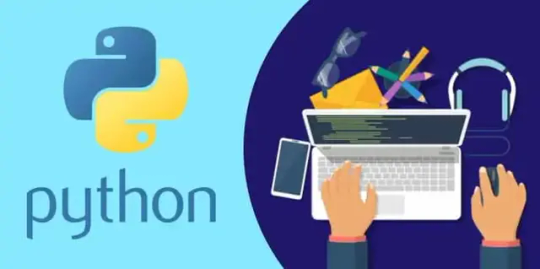
Learning Python "smartly" involves a combination of effective strategies and approaches that maximize your understanding and retention of the language. Here's a step-by-step guide to learning Python intelligently
Set Clear Goals
Define your specific goals for learning Python. Are you interested in web development, data science, machine learning, automation, or something else? Having clear goals helps you tailor your learning path.
Start with the Basics
Begin by building a strong foundation in Python's fundamentals, including variables, data types, control structures (if statements, loops), functions, and basic input/output.
Use Interactive Learning
Work with interactive learning platforms like Jupyter notebooks or interactive coding environments. These tools allow you to experiment, test code snippets, and see immediate results.
Practice Regularly
Consistent practice is key. Dedicate regular time slots for learning and coding in Python, even if it's just 20-30 minutes a day. Regular practice reinforces your knowledge.
Learn by Doing
Apply what you learn by working on projects and real-world problems. Projects provide context and practical experience that enhance your understanding.
Work on Mini-Projects
Start with small Python projects that align with your interests. These projects can include simple games, utilities, or scripts. As you progress, tackle more complex projects.
Study Data Structures and Algorithms
Familiarize yourself with common data structures (lists, dictionaries, sets, etc.) and algorithms (sorting, searching, recursion). Understanding these concepts is essential for problem-solving.
Explore Python Libraries
Depending on your goals, explore Python libraries and frameworks relevant to your field of interest. For example, NumPy and pandas for data science or Django and Flask for web development.
1 note
·
View note
Photo

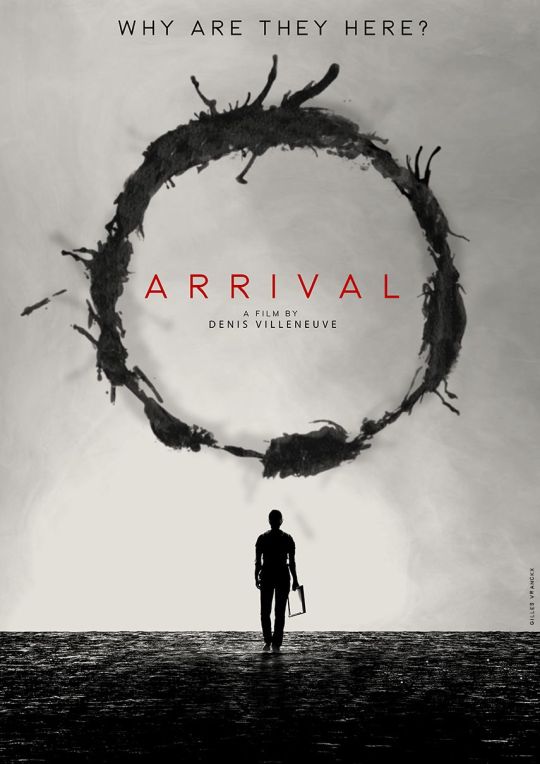
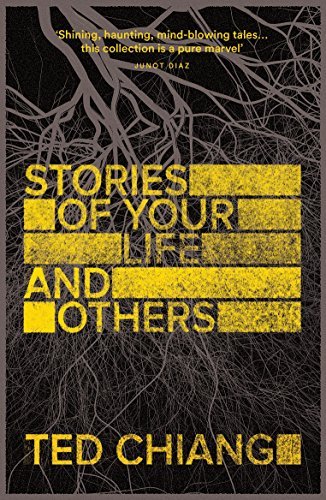
Arrival is a stunning science fiction movie with deep implications for today
Science fiction is never really about the future; it’s always about us. And Arrival, set in the barely distant future, feels like a movie tailor-made for 2016, dropping into theaters mere days after the most explosive election in most of the American electorate’s memory.
But the story Arrival is based on — the award-winning novella Story of Your Life by Ted Chiang — was published in 1998, almost two decades ago, which indicates its central themes were brewing long before this year. Arrival is much more concerned with deep truths about language, imagination, and human relationships than any one political moment.
Not only that, but Arrival is one of the best movies of the year, a moving, gripping film with startling twists and imagery. It deserves serious treatment as a work of art.
The strains of Max Richter’s "On the Nature of Daylight" play over the opening shots of Arrival, which is the first clue for what’s about to unfold: that particular track is ubiquitous in the movies (I can count at least six or seven films that use it, including Shutter Island and this year’s The Innocents) and is, by my reckoning, the saddest song in the world.
The bittersweet feeling instantly settles over the whole film, like the last hour of twilight. Quickly we learn that Dr. Louise Banks (Amy Adams) has suffered an unthinkable loss, and that functions as a prelude to the story: One day, a series of enormous pod-shaped crafts land all over earth, hovering just above the ground in 12 locations around the world. Nobody knows why. And nothing happens.
As world governments struggle to sort out what this means — and as the people of those countries react by looting, joining cults, even conducting mass suicides — Dr. Banks gets a visit from military intelligence, in the form of Colonel Weber (Forest Whitaker), requesting her assistance as an expert linguist in investigating and attempting to communicate with whatever intelligence is behind the landing. She arrives at the site with Ian Donnelly (Jeremy Renner), a leading quantum physicist, to start the mission. With help from a cynical Agent Halpern (Michael Stuhlbarg), they suit up and enter the craft to see if they can make contact.
It’s best not to say much more about the plot, except that it is pure pleasure to feel it unfold. The most visionary film yet from director Denis Villeneuve (Prisoners, Sicario) and scripted by horror screenwriter Eric Heisserer (Lights Out), its pacing is slower than you’d expect from an alien-invasion film, almost sparse. For a movie with so many complicated ideas, it doesn’t waste any more time on exposition than is absolutely necessary. Arrival is serious and smartly crafted, shifting around like a Rubik’s cube in the hand of a savant, nothing quite making sense until all the pieces suddenly come together. I heard gasps in the theater.
The film’s premise hinges on the idea, shared by many linguists and philosophers of language, that we do not all experience the same reality. The pieces of it are the same — we live on the same planet, breathe the same air — but our perceptions of those pieces shift and change based on the words and grammar we use to describe them to ourselves and each other.
For instance, there is substantial evidence that a person doesn’t really see (or perhaps "perceive") a color until their vocabulary contains a word, attached to meaning, that distinguishes it from other colors. All yellows are not alike, but without the need to distinguish between yellows and the linguistic tools to do so, people just see yellow. A color specialist at a paint manufacturer, however, can distinguish between virtually hundreds of colors of white. (Go check out the paint chip aisle at Home Depot if you’re skeptical.)
Or consider the phenomenon of words in other languages that describe universal feelings, but can only be articulated precisely in some culture. We might intuitively "feel" the emotion, but without the word to describe it we’re inclined to lump the emotion in with another under the same heading. Once we develop the linguistic term for it, though, we can describe it and feel it as distinct from other shades of adjacent emotions.
These are simple examples, and I don’t mean to suggest that the world itself is different for people from different cultures. But I do mean to suggest that reality — what we perceive as comprising the facts of existence — takes on a different shape depending on the linguistic tools we use to describe it.
Adopting this framework doesn’t necessarily mean any of us are more correct than others about the nature of reality (though that certainly may be true). Instead, we are doing our best to describe reality as we see it, as we imagine it to be. This is the challenge of translation, and why literal translations that Google can perform don’t go beyond basic sentences. Learning a new language at first is just about collecting a new vocabulary and an alternate grammar — here is the word for chair, here is the word for love, here’s how to make a sentence — but eventually, as any bilingual person can attest, it becomes about imagining and perceiving the world differently.
This is the basic insight of Arrival: That if we were to encounter a culture so radically different from our own that simple matters we take for granted as part of the world as it is were radically shifted, we could not simply gather data, sort out grammar, and make conclusions. We’d have to either absorb a different way of seeing, despite our fear, or risk everything.
To underline the point, Dr. Banks and the entire operation are constantly experiencing breakdowns in communication within the team and with teams in other parts of the world, who aren’t sure whether the information they glean from their own visits to pods should be kept proprietary or shared.
It’s not hard to see where this is going, I imagine — something about how if we want to empathize with each other we need to talk to one another, and that’s the way the human race will survive.
And, sure.
But Arrival also layers in some important secondary notes that add nuance to that easy takeaway. Because it’s not just deciphering the words that someone else is saying that’s important: It’s the whole framework that determines how those words are being pinned to meaning. We can technically speak the same language, but functionally be miles apart.
n the film, one character notes that if we were to communicate in the language of chess — which operates in the framework of battles and wars — rather than, say, the language of English, which is bent toward the expression of emotions and ideas, then what we actually say and do would shift significantly. That is, the prevailing metaphor for how beings interact with each other and the world is different. (Some philosophers speak of this as "language games.")
This matters for the film’s plot, but more broadly — since this is sci-fi, and therefore actually about us — it has implications. Language isn’t just about understanding how to say things to someone and ascribe meaning to what comes back. Language has consequences. Embedded in words and grammar is action, because the metaphors that we use as we try to make sense of the world tell us what to do next. They act like little roadmaps.
You have empathized with someone not when you hear the words they’re saying, but when you begin to ascertain what metaphors make them tick, and where that conflicts or agrees with your own. I found myself thinking a lot about this reading Arlie Russell Hochschild’s Strangers In Their Own Land, which is up for a National Book Award this year and describes the overarching metaphors (Hochschild calls them "deep stories") that discrete groups of Americans — in this case, West Coast urban liberals and Louisiana rural Tea Partiers — use to make sense of the world. She isn’t trying to explain anything away. She’s trying to figure out what causes people to walk in such drastically different directions and hold views that befuddle their fellow citizens.
Part of the challenge of pluralism is that we’re not just walking around with different ideas in our heads, but with entirely different maps for getting from point A to Z, with different roadblocks on them and different recommendations for which road is the best one. Our A's and Z's don’t even match. We don’t even realize that our own maps are missing pieces that others have.
Presumably one of these maps is better than the others, but we haven’t agreed how we would decide. So we just keep smacking into one another going in opposite directions down the same highway.
Arrival takes off from this insight in an undeniably sci-fi direction that is a little brain-bending, improbable in the best way. But it makes a strong case that communication, not battle or combat, is the only way to avoid destroying ourselves. Communication means not just wrapping our heads around terms we use but the actual framework through which we perceive reality.
And that is really hard. I don’t know how to fix it.
In the meantime, though, good movies are somewhere to start. Luckily Arrival is a tremendously well-designed film, with complicated and unpredictable visuals that embody the main point. Nothing flashy or explosive; in some ways, I found myself thinking of 1970s science-fiction films, or the best parts of Danny Boyle’s 2007 Sunshine, which grounded its humanist story in deep quiet.
The movie concludes on a different note from the linguistic one — one much more related to loss and a wistful question about life and risk. This may be Arrival’s biggest weakness; the emotional punch of the ending is lessened a bit because it feels a little rushed.
But even that conclusion loops back to the possibilities of the reshaped human imagination. And this week, especially, you don’t need to talk to an alien to see why that’s something we need.
from: https://www.vox.com/culture/2016/11/11
.
#arrival#denis villeneuve#2016#the story of your life#ted chiang#amy adams#jeremy renner#max richter#on the nature of daylight#johann johannson
3 notes
·
View notes
Text
How to Learn Data Science in 2020 | Step By Step Action Plan for Learning Data Science | Edureka
How to Learn Data Science in 2020 | Step By Step Action Plan for Learning #DataScience | #Edureka | #Datalytical
🔥Edureka Data Science Master Program: https://www.edureka.co/masters-program/data-scientist-certification This Edureka video on Step By Step Action Plan To Learn Data Science In 2020 will help you understand How you can learn Data Science in an easy and perfectly ordered manner.
Python Tutorial Playlist: https://goo.gl/WsBpKe Blog Series: http://bit.ly/2sqmP4s ———————————————————————————————————-
View On WordPress
#data science edureka#data science in 2020#data science learning guide#data science learning path#data science learning plan#data science learning steps#data science market trends#edureka#learn data science#learn data science for beginners#learn data science smartly#learn data science step by step#learn data science with python#learn data science with python from scratch#python edureka#step by step to learn data science#what is data science#yt:cc=on
0 notes
Text
Air quality improvements lead to more sulfur fertilizer use
https://sciencespies.com/environment/air-quality-improvements-lead-to-more-sulfur-fertilizer-use/
Air quality improvements lead to more sulfur fertilizer use
Sulfur, an essential nutrient for plants, was as free as air back in the 1980s, drifting down onto farmers’ fields from the polluted sky. The nutrient also caused acid rain, however, and it triggered chemistry that meant more mercury in fish. Regulations led to less sulfur in the air, but in the Midwest, where sulfur-hungry corn and soybean fields were proliferating, crops still needed the nutrient.
“We find a clear increase in sulfur fertilizer use commensurate with a decline in atmospheric deposition,” said Eve-Lyn Hinckley, a Cooperative Institute for Research in Environmental Sciences (CIRES) fellow, University of Colorado Boulder ecologist and lead author of a new assessment of sulfur fertilizer use. “We have compiled the first time-series of sulfur fertilizer data spanning decades, from 1985-2015.”
As sulfur stopped dropping from the sky, farmers began applying it directly, Hinckley and her colleague, Charles Driscoll from Syracuse University, reported in late December in the journal Communications Earth & Environment. Moreover, sulfur fertilization accelerated quickly, they found, far outpacing the growth in use of other nutrients such as nitrogen and phosphorus.
That’s significant, because sulfur’s impacts can be serious: the chemical can essentially make heavy metals, including toxic mercury, more “mobile” and more likely to make their way into fish, for example.
Hinckley said it’s not yet clear how extensively sulfur fertilization impacts the mercury cycle.
“It’s the same form of sulfur as was going on with acid rain. However, that was diffuse, widespread atmospheric deposition, and this is intense, targeted applications in much larger amounts.” She and her colleagues are already digging into the connection, “looking at the potential interaction between agricultural sulfur runoff and stimulation of methylmercury formation downstream.”
Even with the environmental risks, farmers do need sulfur fertilizers, Hinckley said, and her work does not suggest prohibiting them. In the case of other nutrients that can cause environmental harm when applied in excess of crop requirements — such as nitrogen and phosphorus — agricultural experts have learned how to minimize damage with selective timing and amounts of application. That’s the goal of her work with sulfur, she said. “We want to help people use it smartly and understand what it does in the environment.”
Story Source:
Materials provided by University of Colorado at Boulder. Note: Content may be edited for style and length.
#Environment
0 notes
Text
Data-Driven Decision Making (DDDM)
Nowadays the world is becoming smart. People are setting SMART goals and achieving them through new techniques. Businesses nowadays want to grow fast and smartly. They want results instead of excuses. To meet such demands, people are learning new ways to formulate results faster. One way to get results and solutions very effectively is to make data-driven decisions.
Data is the new oil and we can’t agree more. Data is so important in recent times, it can make or break organizations. Fields like Data sciences and data analytics are booming due to the demand for professionals who can perform work on Data. Organizations nowadays tend to make Data-driven decisions. These decisions are based on the facts which are driven by raw data of the company. Data can be the sales from the last year, no of orders, no of returns, anything that includes numbers or figures. Or even the polls which are conducted in the companies, literally anything can be used as data and we can make conclusions based on that data.
For example, a company wants to increase its sales through advertisement. They hire a data analyst to find a solution to this problem. The data analyst will first of all list down all the advertisement mediums. Then he will try to figure out what age group and gender will be interested to buy that product. After figuring that out he will find out which advertisement channel is used by that specific target audience. And in the end, he will come up with an advertising medium that will be used to market that product. And it is imminent that customers will come through that medium.
That’s how a data-driven decision is made and it is much more effective than just assumptions.
0 notes
Text
Liberal Arts and Tech Ideas
After reading about the PageRank algorithm created by Google, I immediately remembered the last visit of Luis Van Ahn to our college. He was the creator of Captcha/ReCaptcha. The main mechanism behind this idea was that by taking about 10 seconds from each user, we can validate the users and gather a lot of data to digitalize books. The basic idea of the PageRank algorithm is that we rank the page’s relevance by counting how many times it is visited by users. The human users who have abilities to read and analyze the information contribute a lot to this algorithm. Both ideas were so successful and impactful on the internet because they smartly utilized the users’ behaviors. Looking at those successes, one may ask (one of my classmates did ask), how are they so smart that they can even think about this? It took me some time to generate some possible answers.
Indeed, I had the same question, but mine was more detailed. My question is, how an engineer, whom I assume to know a lot of technical knowledge and how to get things done, can deeply understand human behaviors and utilize them to make their technical ideas successful?
One of my possible answers to this question is liberal arts education. At Dickinson College, a liberal arts college, I had opportunities to learn from a variety of academic fields such as social sciences besides my computer science major. Instead of just focusing on technical knowledge on how to build a project, or how to use a tool to implement an idea, we learned different aspects that can affect and contribute to the technical projects.
A clear example is that even though this account is used for posting blogs that are related to my senior seminar at Dickinson College, this post as a part of my Database course’s assignments is super related to the contents of the senior seminar course. One of my classmates raised the question “Does Google excludes certain sites from displaying on the search engine as some sites may contain information dangerous for users?”. In my senior seminar class, we had a chance to discuss how social media platforms protect their users from viewing false or harmful information. The solutions can be utilizing AI to identify false information or using the report systems, which utilize the contribution of the crowd. The same approach to social media sites problem can be applied. Google processed many sites so that they can easily be correctly served to the users. They can utilize AI to identify harmful information, and at the same time, have a reporting system to quickly narrow down the harmful sites. Being able to have discussions with classmates about current issues can broaden our knowledge and combine different sources of information to come up with a solution for a technical issue. Besides, with liberal arts education, we have a chance to work on Open-Source projects and have a habit of contributing to society. This may sound irrelevant but the more people have this habit, the safer the internet will be since dangerous sites can be quickly reported.
This liberal arts education also gives me a need to be concerned about other aspects of a product instead of only its functionality. By observing a question raised by my classmate and how another answered that question, I had a little concern about the search engine hosted by Google. The question raised was “Google finds new sites from existing sites, so how is it possible for Google to find brand new sites that have just been published? Is there any way we can submit our websites to Google or ensure that our website can be crawled and indexed so that it appears when the search engine is used?”. The solution was mentioned in one of my classmate’s answers “According to the paper, new web pages must be indexed by Google to be searched and visited by users from anywhere on the web. However, modern web builders not only need to create their webpages but also manually register them with the Google SEO (Search Engine Optimizer) to inform web engine crawlers of their presence and become searchable.”. Any newly published site cares about how to get people's attention. The best way is to let Google knows. It gives me a feeling that Google is the only player in the search engine game. No one else can compete with Google in this field. The more people use the search engine, the more useful Google’s search engine becomes. This leads to the fact that everyone only uses Google to find things they want. Other search engines will slowly be wiped out of the internet due to the lack of users. With the power of the only one who gives people information, will someday Google manipulate people’s consciousness of finding information? This question seems unrealistic but worth considering.
0 notes
Text
Certified Gym Trainers Will Teach You Everything You Need To Know
You’ll be able to set goals and create a plan of action to assist you to achieve them with the help of personal training (Singapore). Gymmboxx certified gym trainers will work with you to improve your exercise techniques and boost your confidence in the gym!
certified Personal trainers(Singapore) are not only for folks who can’t seem to get the energy to go back to the gym or stick to their fitness regimen. They can also help you achieve your fitness goals by customizing an exercise program, particularly for you. We’ve gathered a list of our licensed gym trainers who provide excellent personal training (Singapore).
0ur certified trainers are:
• Ben chai He is aware of how difficult a person’s fitness journey might be. He will ensure that all of your needs are met and that you receive the best guidance available to help you reach your goals. • Bryan Tai This affable guy is the ideal workout buddy for any guy out there. We’re prepared for a workout full of jokes and genuine moments. When it comes to training, it’s not just about hitting a specific number. • Arron Aaron can relate to and understand his trainees’ struggles because he has been through it all – injury, surgery, despair, and recuperation. He’s the right man for the job, with years of experience. We all need someone to guide us through life, and he’s the man for the job. • Hezri He’s the ideal training partner. He knows when it’s time to crank it up and when it’s time to relax. You’ll never have a boring session with him as your trainer since he’ll always find fresh methods to liven up your training. • Victor Despite discovering his love of training, he earned a diploma in sports science. Despite his laid-back demeanor, he trains hard but also smartly. If you need facts, data, or someone who can get the job done. • Wei Hou To make her concerts more exciting, she incorporates a rhythmic element. We all want the perfect figure, but Hou Wei went a step further and pursued it solely on her own merits. So, don’t wait any longer, and start your fitness journey with her!
Even if you intend to build your own plans and exercise on your own, hiring a personal trainer for a few sessions can help you learn how to properly perform a new activity. This is especially true if you’re new to strength training and need some practice.
0 notes
Text
Top IT Skill demand in 2022 -you can Learn Online

The world is experiencing a digital revolution, which is causing trends to change faster than ever before. New technologies are penetrating to siphon off the old ones, making skills training, up skilling, and reskilling more necessary than ever. So let's take a look at the most wanted skills that will be in demand in the future for 2022.
1. Data Science and Data Analytics
It is unlikely that any business today can operate without the power of data. A valuable IT skill in demand today is data analysis, which helps organizations optimize their operations. Using data science to automate businesses has become increasingly important in the past few years. It also assists in accessing and predicting risks in large transactions. Data scientists are responsible for collecting, managing, and analyzing data. Besides being used in digital marketing and advertising, large corporations heavily depend on data for various operational requirements.
2. Cybersecurity
As we become more and more digital cyber threats and attacks are on the escalating list of crimes. Although it is contrary to the laws of physics, the relationship between digital innovations and cyber-attacks is still valid. As an organization faces this threat, more and more cyber experts are needed to help. Markets and Markets projects that the global cyber security market size will increase from $217.9 billion in 2021 to $345.4 billion by 2026. A compound annual growth rate of 9.7% from 2021 to 2026. This indicates the importance of cyber security skills.
3. Blockchain
Using Blockchain technology, stakeholders sharing access to a database will not face safety or trust issues since the technology utilizes a distributed, encrypted model. The most common Blockchain use cases are in the financial sector, where technology plays an important role. Moreover, it offers secure data transfers, accelerates the data transfer process, and reduces compliance costs. Blockchain experts are in high demand by industries, start-ups, tech companies, and government agencies, which are expanding their reach and application beyond crypto currencies. It gives businesses the ability to transform stagnant industries and create better business models.
Organizations are grappling with the impacts of the Covid-19 pandemic, leading to a flurry of disruptive trends. PWC's report reveals that Blockchain could help organizations rebuild and reconfigure their operations to improve trust, transparency, and efficiency across organizations and society.
Blockchain technology still has a long way to go and it is in high demand for those who have the skills to master it.
4. Machine Learning and Artificial Intelligence
Increasingly, businesses rely on data for their operations, so AI/ML skills will continue to be highly in demand. Due to the rapid usage of IoT and computing, AI skills are becoming increasingly important. With artificial intelligence and machine learning, we can identify patterns and patterns that are impossible to see with legacy methods. We can also automate work so it stays error-free and seamless. AI allows robots to work smartly by learning from experience, whereas ML uses data to perform learning. AI enables robots to work smartly by learning from experience, whereas ML uses data to make learning possible. AI/ML is becoming increasingly relevant as companies permit employees to work remotely. Today, the majority of leading companies, such as Facebook, Google, and Uber, use machine learning in their core operations.
5. UX Design
People need to have a superior user experience when using any apps or websites in today's digital world. UX (User Experience) designs map out a user's perspective on a particular product or service and then present it accordingly. For modern-day businesses that interact with customers, UX holds an important place and is often imperative.
Source:- https://www.premiumebooks.xyz/2022/01/top-it-skill-demand-in-2022-you-can.html
0 notes
Text
Big Data Analytics - Demand of Today’s Technical World
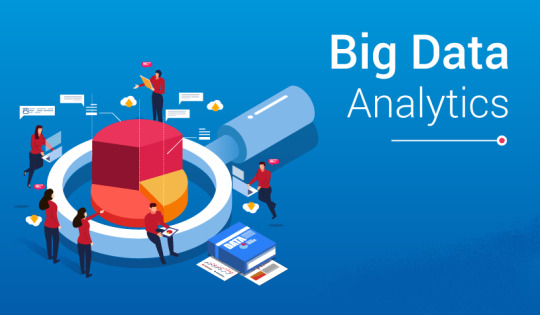
Data Science & Data Analytics are the most recent and demanding fields in today's technical world, We are surrounded by electronic gadgets most of are generating continuous data like Cell Phone Applications, Online Web Portals, Digital Cameras, Smart watches, Tablets, GPS devices, IoT based devices and tools which are collecting and storing data on cloud. Here Data Management is a critical issue because the data is not only Huge it is also heterogeneous in nature. To deal with this issue we have an advanced field “Data Science and Data Analytics” which is the advanced version of “Data Mining”, it is not just an approach, it’s a bunch of smart, advanced & Optimized algorithms, Which guide to Data Analyst expert to write code or generate logics in the form of programming (Code) to smartly manage & visualize to discover knowledge from this huge, heterogeneous & Big Data. Here Artificial Intelligence & Machine Learning work as the backbone to implement smart logics. Nowadays Universities are also launching the Bachelor and Master Degree programs in AI, Machine Learning & Data Science to prepare students as the demand of today’s technical world.
Dr Kapil Chaturvedi Associate Professor Dept of CSE, SIRT, SAGE Group, Bhopal, MP, India
1 note
·
View note